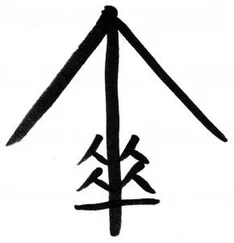Moji’s Vengeance , flying below them, rose higher until its top touched the bottom edges of the floating walls to form the floor of the box.
Silkmotic Arrow , up at the top, went through an even more amazing transformation. The ballast ball was shifted until the ship had completely rolled over so that the ballast ball dangled from what used to be the upper surface of the ship, and the gondola was perched at the top. As the ship rolled, Marshal Mazoti and all the other members of the crew in the gondola moved with the tilting floor and walls until they were standing on what used to be the ceiling. Then Silkmotic Arrow slowly descended until its billowing hull joined the other ships to form the top of the box.
Rowers in all the airships retracted their feathered oars, which were foldable and collapsible to facilitate storage. More crew members at the rims of the saucer-shaped hulls tossed rigging across gaps to lash the ships together.
The six airships now formed a floating fortress with six gondolas pointing in every direction. This structure remedied one of the greatest weaknesses of the airships: their vulnerability to attacks from above and below, which had been taken advantage of by the highly maneuverable garinafin riders during Kuni Garu’s invasion of Rui.
Then the floors of the gondolas popped off.
The Lyucu warriors on the city-ships below expected the crew of the airships to tumble out of the gondolas. However, they were disappointed because the gondolas on these airships were never designed to be anything more than decorative. Their sole function had been to conceal.
In place of the unassuming gondolas and their puny human archers, massive crossbows that spanned the width of the entire gondola now pointed at the oncoming garinafins. The crossbows were made from a composite of layers of wood, horn, and sinew, and the strings were thick strands of twisted silk. The bows were so strong that they could only be drawn with a system of wheels, gears, and pulleys, and this was the mechanism the crews had been operating as they spun the wheels earlier while chanting.
The bolts the crossbows fired were each fifty feet long, made from the massive bamboo canes found in the cloud-fed groves of Mount Fithowéo. The foot-wide arrowheads were fashioned from thousand-hammered steel, and they glinted in the bright sunlight like the scales of a cruben. These were the airships’ true teeth and claws, not the feeble arrows they had shot earlier as a distraction.
The crossbows were mounted on a mechanism that allowed them to be aimed in any direction.
Each of the gondolas had disguised a single large, circular platform suspended from an arched beam attached to the endpoints of a horizontal pole running through the center of the platform so that the platform was free to tilt up and down. A clever system of pulleys and ropes ensured that the platform always remained parallel to the ground no matter how the airships rolled or pitched.
Upon each circular platform rested a giant horizontal spoked wheel free to rotate about the central axis, and it was on this wheel that the crossbows were mounted. Some of the crew stood on the wheel to load the bolts and draw the string; others stood at the rim, ready to rotate the spoked wheel so that the crossbow could be pointed in any direction in the plane; still others stood inside the hull, ready to operate the pulleys to tilt the platform and alter the crossbow’s elevation.
The garinafin riders, seeing this floating fortress reveal its secret, felt a momentary chill in their hearts.
However, Tanvanaki hesitated only a second before deciding against calling off the assault. To be sure, the bolts looked powerful, but even if they penetrated the leather and muscle of the garinafins, they would hardly be fatal unless they managed to strike the heart of the beasts—no easy feat given their speed in flight and the toughness of the animals’ rib cages. Considering that the airships had time for only one volley before the garinafins were in range with their fire breath, and that the garinafins outnumbered the airships by more than three to one, the odds were decidedly against the Imperials.
However, she did tap the back of Korva’s neck lightly, telling her to slow down. Placing her bone speaking tube against the spine of the garinafin, she issued a series of commands, which Korva related to the other garinafins via a series of moans and bellows.
As the garinafins approached, they divided into separate squads and swerved, heading for positions to the left, right, above and below the floating fortress. Tanvanaki was hoping that this aerial dance by the nimble garinafins would confuse and distract the crew members in charge of targeting the gigantic bolts.
But Mazoti was prepared for this. She gave the order, “Firing pattern one!” Dafiro Miro struck the gong twice in quick succession to pass the order to the other ships.
Platforms tilted, wheels spun, and every airship was now targeting a garinafin to the left of the target spotter: This minimized the chances of multiple bolts being wasted on a single garinafin and decreased the possibility of friendly fire.
With a loud twang, five long bamboo bolts blasted from the airships, heading for five garinafins. Only Vigor of the Twins , which was facing south, did not acquire a target as the garinafins did not completely surround the floating fortress.
Though the garinafin riders expected the bolts to do some damage, the ease with which they plunged into the tough garinafin hide and tore through thick bundles of muscle was shocking. This was the result of yet another small refinement in the construction of the arrowheads: They were diamond-tipped. Empress Jia had emptied the Imperial Treasury in Pan to supply the marshal’s workshops with enough diamonds to construct these bolts, each as expensive as a baron’s castle.
Time seemed to slow down.
As the bolts ripped through the bodies of the garinafins, they quickly lost energy and decelerated. The garinafins howled in pain and shuddered, their motions jerky and the riders on their backs hanging on for dear life.
But as Tanvanaki had gambled, though the bolts injured the garinafins, none of them managed to pierce the heart of a garinafin, and the wounds would not be fatal. The struck garinafins just had to curl their long serpentine necks around to pull the bolts out with their teeth.
The bolts, having now lost most of their momentum, stopped penetrating any farther into the massive beasts. The bamboo shafts flexed and something seemed to break inside them.
At that moment, the struck garinafins felt a deep, powerful jolt inside their bodies, as though some giant hand had reached in, seized their innards, and given a forceful tug. It left them with a strange sensation: not quite cold, not quite pain, but a sort of spreading numbness.
Muffled explosions.
Each of the struck garinafins seemed to bulge just slightly. The garinafins looked at their companions helplessly, their wings slowing down.
“What’s wrong?” shouted Tanvanaki. But the riders on the struck garinafins looked confused. Their mounts were no longer obeying their orders, but flapped their wings laboriously and convulsively, panic evident in their dark, pupilless eyes.
And then, just like that, the five struck garinafins exploded, turning into five burning, bloody clouds—flesh, bone, leather, viscera, gore rained down upon the stunned Lyucu warriors gazing up at this fantastical display.
Théra was the first of the observers to jump up in joy as the sky turned red with the fire of the dying garinafins, and a faint mist of blood rained down around them.
Читать дальше













